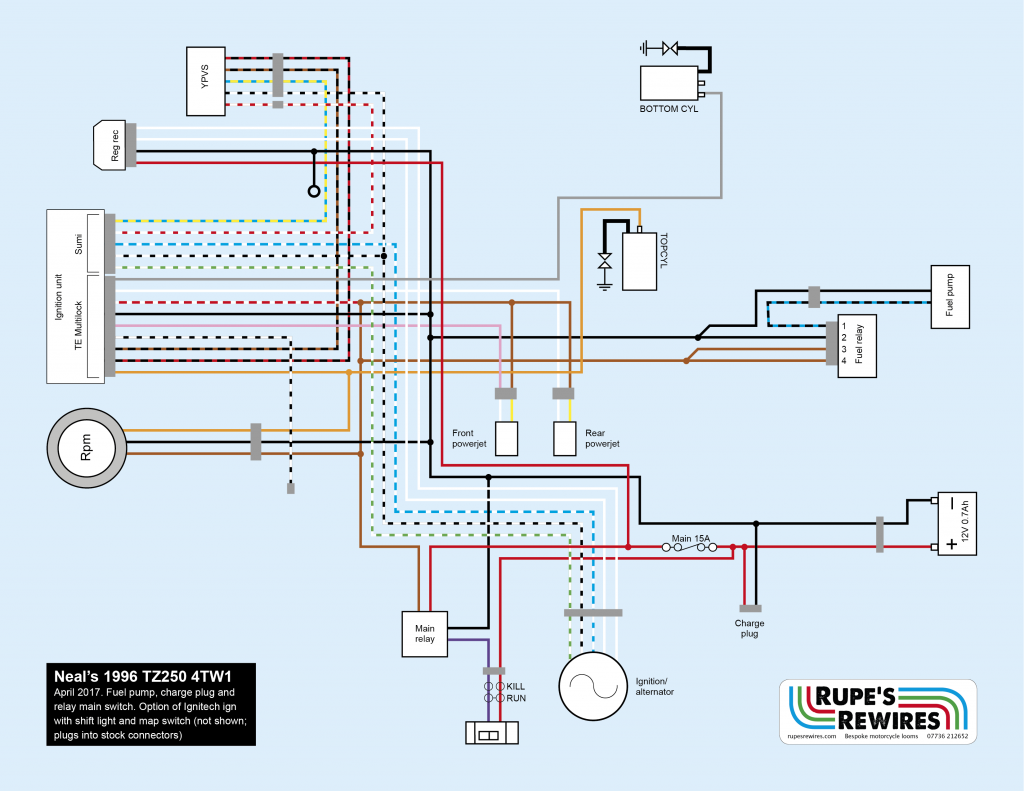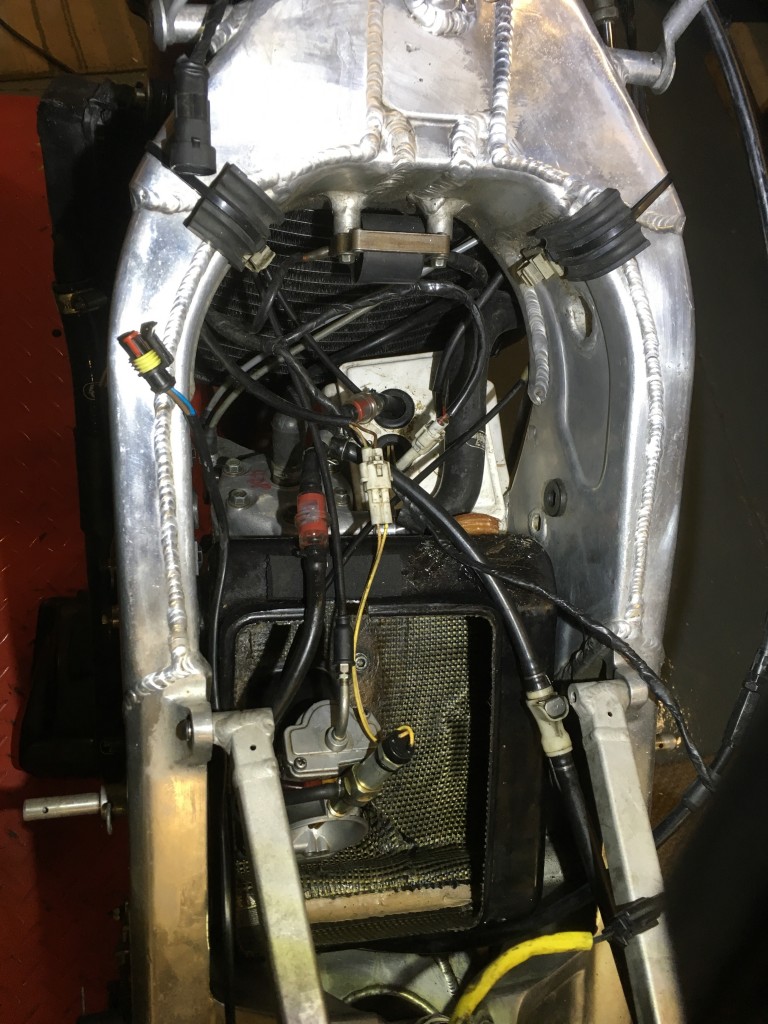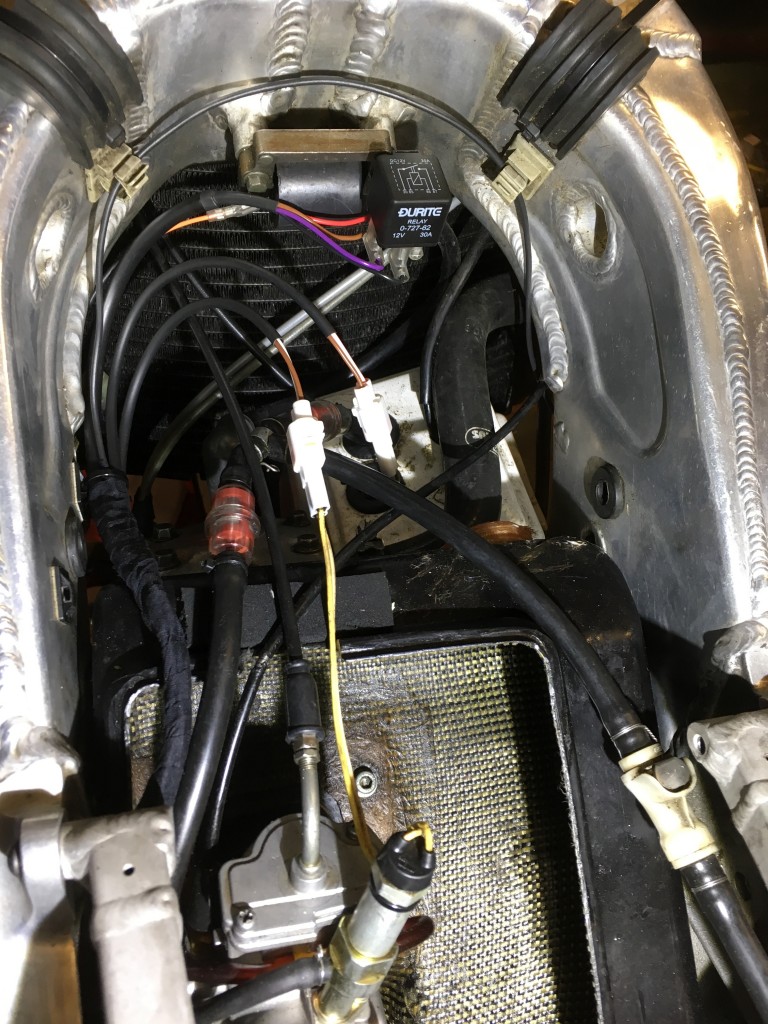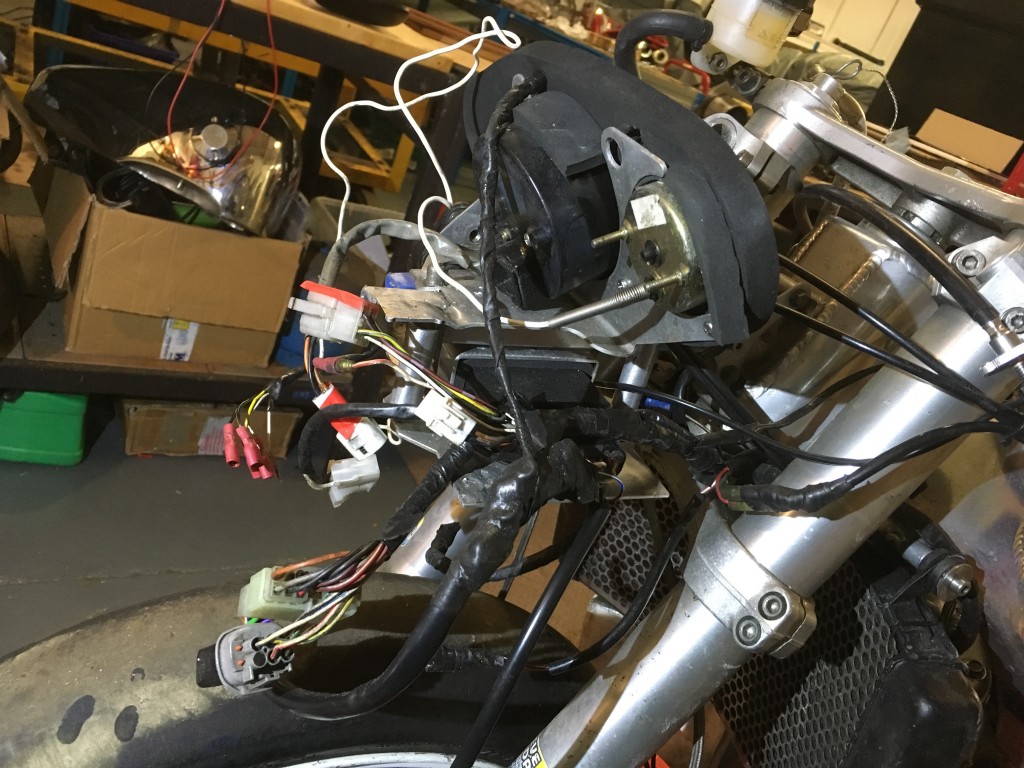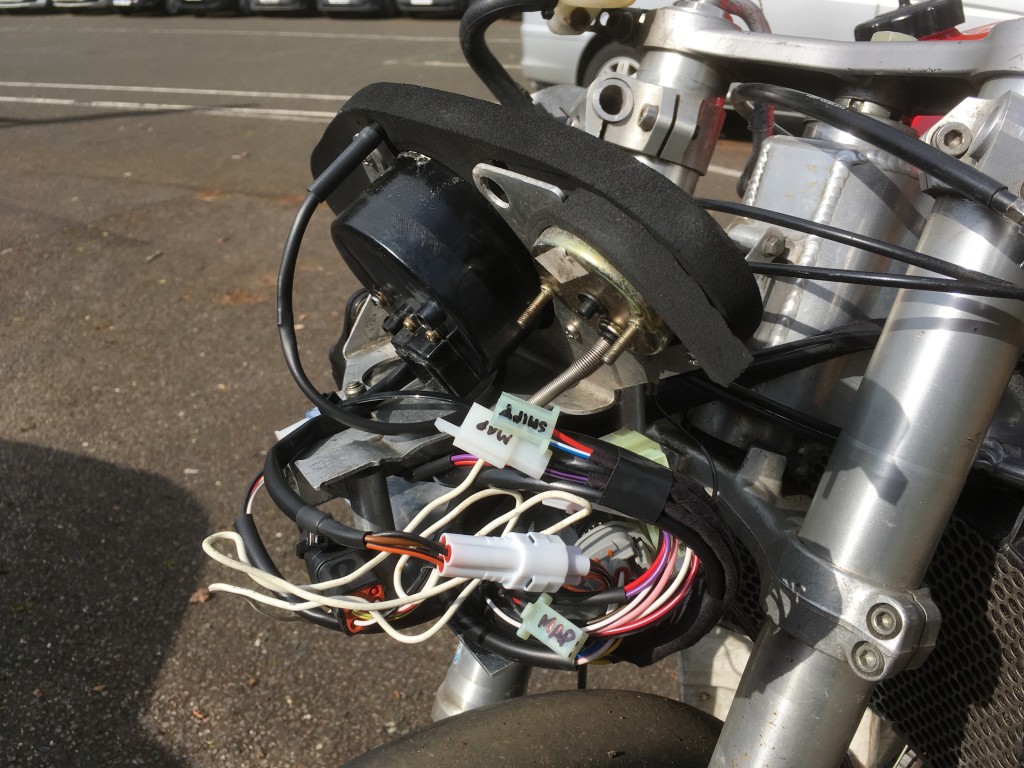Neal’s TZ250
Working on a bike that is going to race round the Isle of Man is a big thrill, and also a bit daunting.
Neal is a long-experienced racer but has always done four strokes, both at short circuits and the TT Mountain course. The Classic TT was his excuse to try a two stroke, and he first raced this TZ at the 2016 event. The battery went flat, and in any case the loom had been hastily modified quite a bit over the years. He asked me to optimise the loom (to minimise any electrical losses) and make up a charge measuring point so that he could run the bike on the dyno and tell whether the alternator was keeping up with the electrical load at full chat.
We couldn’t find a factory wiring diagram for this precise model, so I dismantled the existing loom and copied that, cross-checking with a diagram from a slightly later model. All the special sealed plugs and connectors are available from Kojaycat, which is brilliant. The only other source I know is the CycleTerminal shop in New Jersey.
Neal had the stock Yamaha ignition and a programmable Ignitech one, and asked for a system that could plug either into the loom. This turned out to be quite simple, but following advice from 250 racer Bruce Dunn he stuck with the standard setup.
Neal came to pick the bike up, bump started it round the yard and grinned his face off. The bike did pretty well at its first race meeting at Castletown in the Isle of Man: 11th in the Post Classic Junior. It raced at the 2017 Classic TT.


